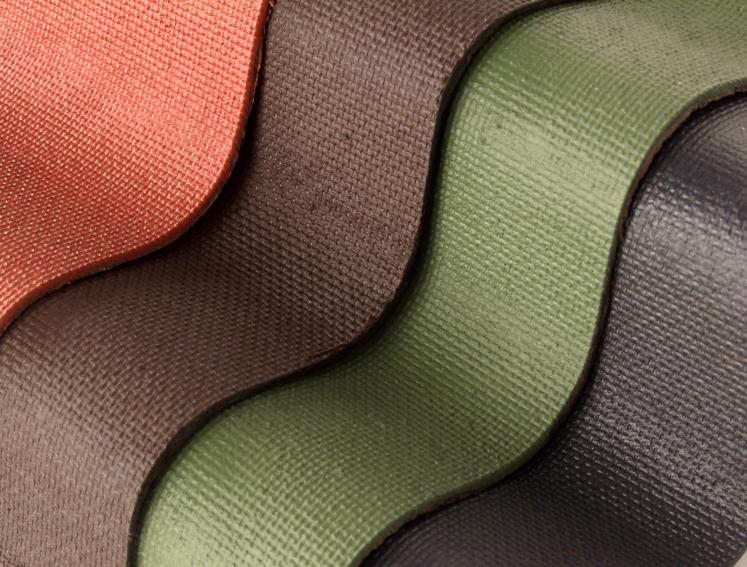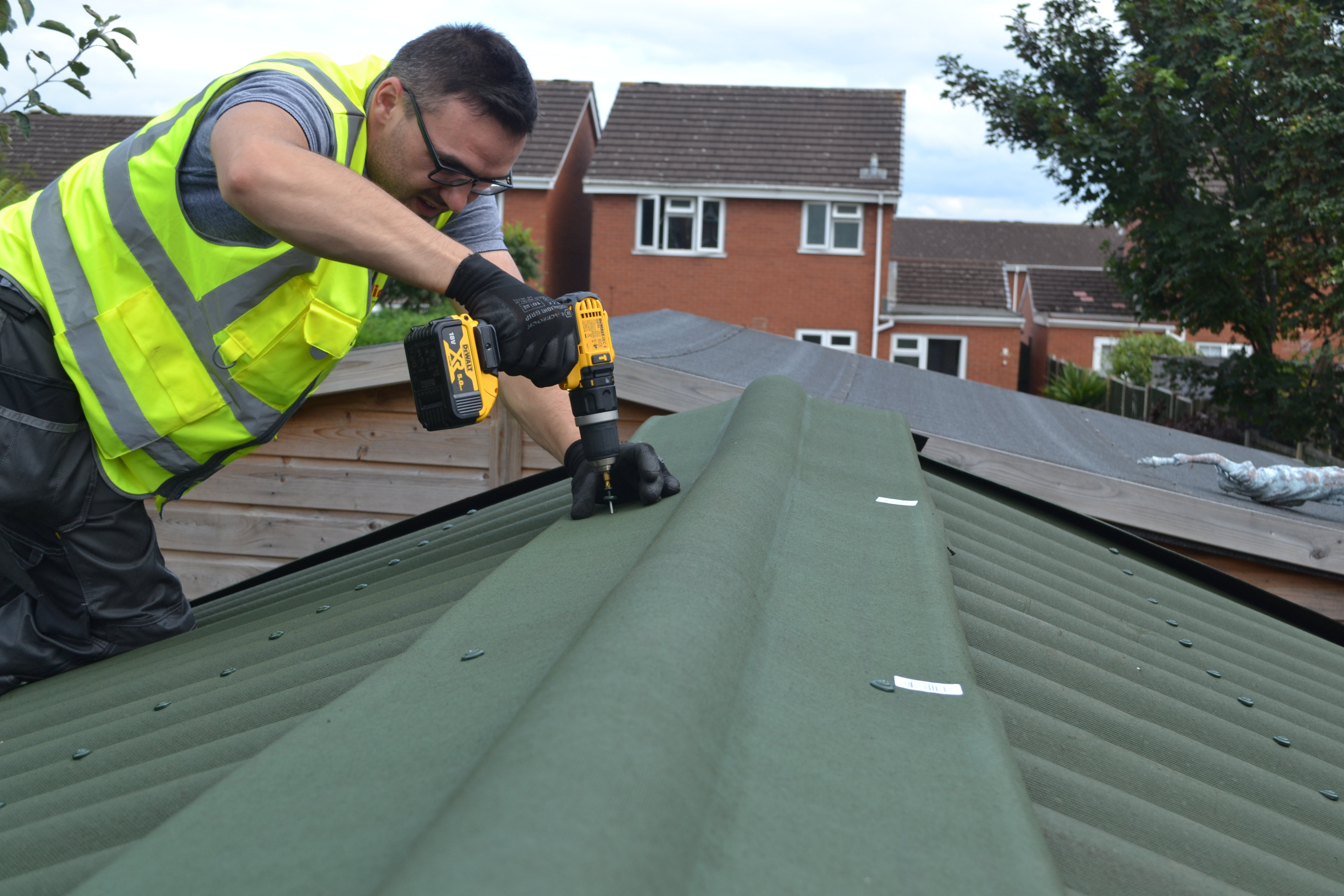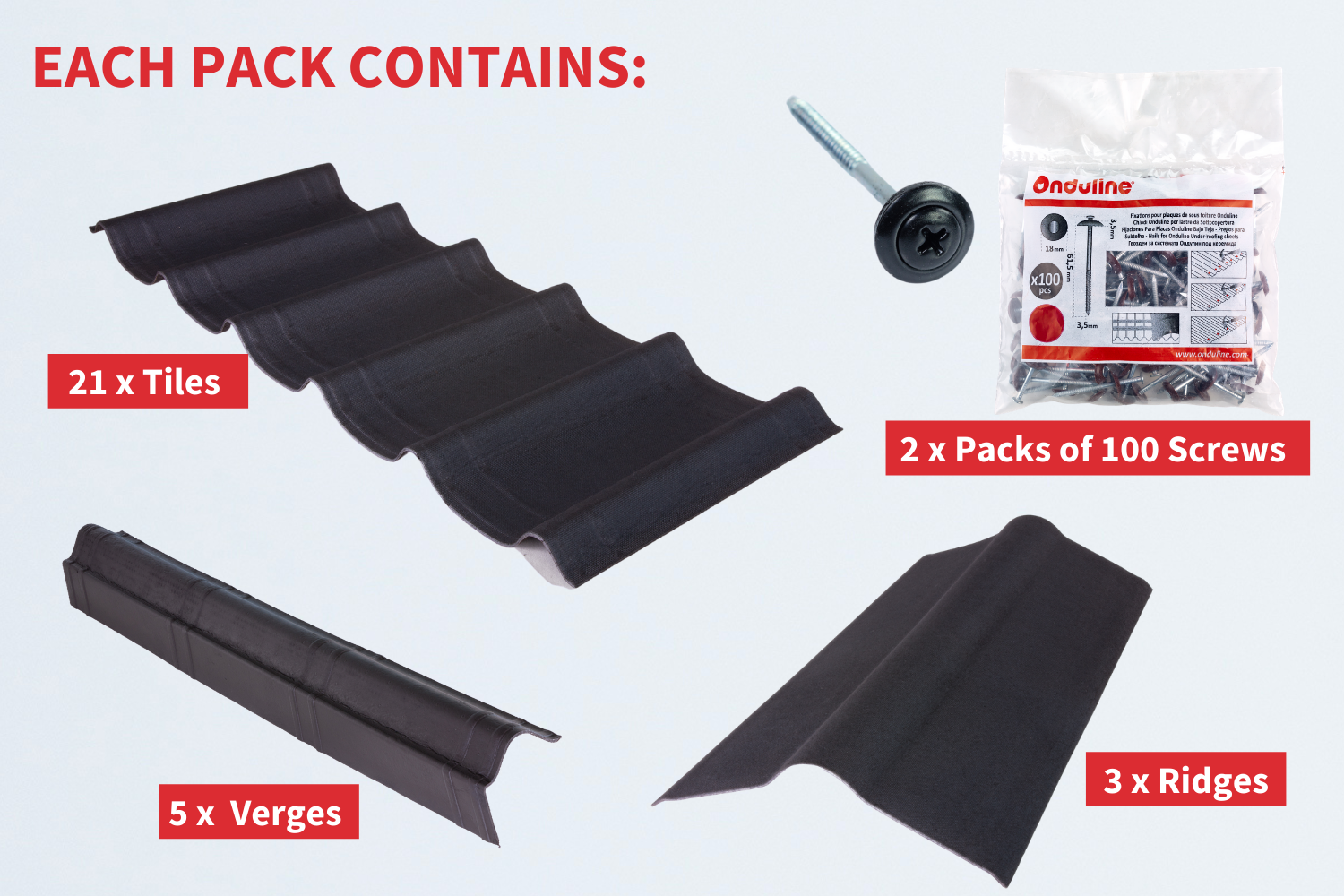There are a few misconceptions when it comes to bitumen roofing. Read on and let us reassure you that by choosing bitumen roofing, it will stand the test of time!
Are you currently weighing up your options when it comes to selecting roofing for your outdoor project? Perhaps you want to give the shed roof a makeover, build a leisure house, or maybe even a playhouse for the children! Whatever it is you’re planning, you’re going to be after a roofing solution that will stand the test of time and not let you down, especially in those winter months.
When it comes to bitumen roofing sheets, there are a few misconceptions and to give you the confidence in selecting the right type of roofing for your outdoor structure, we’re ironing some of those out in this blog post!
Let’s start with a quick recap…
What are bitumen roofing sheets?

A DIY friendly solution!
Our bitumen roofing sheets are a tough and durable corrugated roofing material! They are made up of recycled cellulose fibres and are suitable for a range of applications. The sheets are finished with an environmentally-friendly colour pigment and resin impregnation process which “stains” the colour into the sheet to provide excellent colour retention properties and enhanced UV resistance.
Now for the common misconceptions…
Common misconception 1: Bitumen sheets are prone to sagging
Not true! In fact, the only reason why our bitumen sheets might sag is due to incorrect installation. A common installation faux pas is having purlins too spaced out which can cause the roofing to eventually sag over time - it’s important you get this part right to ensure longevity of your roofing! Key things to consider during application of your roofing sheets are:
Your roof’s pitch - this is important as it will determine how your sheets should be installed so it is worth checking.
Your roof support structure - What you are looking for here is whether your roof’s support structure uses deck boards or purlins. You should be able to easily identify which of these it has as with purlins you’re likely to be able to see the underside of the Onduline roofing sheets, whereas with deck boards you will be able to see those instead.
The distance between purlins - If your roof pitch is over 15 degrees (over 27%) your purlins should be no further than 61 cm apart. If your roof pitch is between 10 and 15 degrees (17 - 27%) your purlins should be no further than 45 cm apart. If your roof pitch is between 5 and 10 degrees (9 - 17%) then your outdoor building should have a full deck using deck boards.
This handy guide will give you more information and pointers for ensuring a successful installation.
Common misconception 2: They’re tricky to install, felt is surely easier?
Whilst you may be quite familiar with installing other roofing types such as felt, you’ll be pleased to know that our roofing, whilst used by professionals, is also made with DIY-ers in mind and is easy to install. Your roofing will come with easy to follow instructions but if you want to understand more about the installation process before you buy, then our website will be able to help. We have a whole series of installation videos as well as our installation guides to help ensure a smooth installation. Here’s what an installation of our CLASSIC roofing looks like in a nutshell:
- Lay the sheets over the gutter line with an overhang and lay them in the opposite direction to the wind
- Lay your second row so the first sheet is parallel to the corrugations but not in line with the first
- Fix the sheets at the eaves, overlaps, and ridges with the correct fixings
- Fix a verge to the edge for ultimate aesthetic, waterproofing and wind resistance, fixing to the sidewall first and then the roofing sheets with an overlap.
- There you have it! Time to enjoy your new waterproof and durable roofing.

Common misconception 3: They might melt in hot weather
Not our roofing sheets! In fact, our roofing is extremely popular internationally and frequently used in countries with a much hotter climate than that of the UK. You’ll find our sheets in Brazil, Columbia, India, and Indonesia to name a few. Whilst the bitumen may soften ever so slightly in hot weather, it will not melt. The melting point of bitumen is actually substantially higher than atmospheric temperatures, so you have nothing to worry about for the next heatwave!
Common misconception 4: They’re expensive compared to alternatives
It’s true that there are cheaper alternatives on the market, but there are also plenty of more expensive ones too! We happily sit in the middle, offering a durable and trustworthy roofing solution that’s budget friendly and proven to last. Our roofing kits are just £165 and will happily roof a shed up to 8x6 or 6x4 foot. You will often find that the real budget roofing solutions will do the job, but only for a very short time! They are often prone to wear and tear, whereas our roofing is built to last, and comes with a minimum 10-year guarantee.

Common misconception 5: They might contain harmful chemicals
Ready to get started on your own Onduline roofing project? Don’t forget our lightweight and easy-to-install roofing can be purchased via our eShop, and select ranges are also available via The Range, Amazon, and Wickes. Check out our full list of stockists.
Also, if you have any questions about our roofing, our team will be happy to help and you can contact us by calling 0207 727 0533 or emailing [email protected].
Discover the full range at onduline.co.uk.